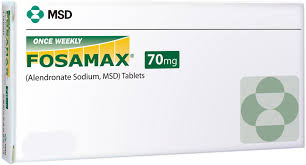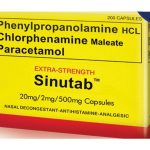Why Was Fosamax Taken Off The Market?

Fosamax is an FDA-approved medication used to prevent or treat osteoporosis (a condition that causes brittle, weak bones) in women who’ve gone through menopause, treat osteoporosis in men, treat osteoporosis that’s caused by using a type of medication called glucocorticoids and treat Paget’s disease of bone (a condition that causes weak, soft bones).
Fosamax contains the active drug alendronate which belongs to a class of medications called bisphosphonates. (A class of medications is a group of drugs that work in a similar way.) Fosamax works to decrease bone breakdown in your body and make your bones stronger. Fosamax comes as 70-milligram (mg) tablets that you take by mouth, typically once a week.
It’s not known exactly how long treatment with Fosamax should last. In clinical trials, the drug was only studied in people for up to 4 years. Your doctor may have you stop taking Fosamax after 3 to 5 years. It was first introduced to the U.S. market in 1995 by the drug manufacturer Merck. The approval is based on efficacy data from five clinical trials, involving a total of 1,827 patients with an average 20% reduction in bone mineral density, in 16 countries. These data show that alendronate can restore bone loss as a result of osteoporosis and also reduces the risk of new spinal fractures, according to Laurence Hirsch, executive director of clinical research at Merck Research Laboratories.

Why was Fosamax recalled?
The United States Food and Drug Administration (USFDA) in one of its enforcement reports stated that Sun Pharma initiated a recall of its Alendronate Sodium Tablets 70mg, the generic version of Merck’s Fosamax due to stability results. The recall involved 381,120 cartons of Alendronate Sodium tablets manufactured at Sun Pharma’s Halol facility in Gujarat.
Why was Fosamax taken off the market?
There have been several controversies surrounding Fosamax leading to several lawsuits against Merck following allegations against the drug company that failed to warn the public about the risk of osteonecrosis of the jaw (ONJ) and femur fractures associated with the drug. In October 2010, the FDA ordered Merck to change its drug label to reflect the bone-fracture connection. Fosamax use may also make fractures more difficult to heal.
On March 22, 2017, The U.S. Court of Appeals for the Third Circuit overturned the dismissal of multidistrict litigation over femur fractures suffered by users of Merck’s osteoporosis drug Fosamax. The decision gives new life to about 5,000 cases that had been dismissed in federal and state courts, according to plaintiffs’ counsel. Merck settled about 1,200 ONJ cases for $27.7 million.
Earlier studies suggest that Fosamax causes fractures because alendronate stops the body from breaking down bone which makes it brittle and prone to fractures. However, the longest-ever study of the drug showed that Fosamax was effective in maintaining bone mineral density at the spine for 10 years, regardless of the age of the patients or the extent of bone loss at the start of treatment.
Millions of postmenopausal women in the U.S. have taken Fosamax since it was first approved in 1995. Postmenopausal women taking 10 mg of Fosamax daily for 10 years had an average increase in bone mineral density at the spine of 13%. And bone density remained stable at other bone sites measured during the study.
A second group of women who took Fosamax for the first five years of the trial, but then discontinued the drug, saw gradual declines in bone density during a five-year period after discontinuing therapy, but therapeutic benefits remained throughout the follow-up period. The findings are published in the New England Journal of Medicine.
Fosamax and most other drugs used to prevent bone loss work by slowing the natural breakdown of bone. In doing so, the mineral content of bones may overly increase, a process known as mineralization. There has been some concern that too much mineralization could cause bones to become more brittle and susceptible to fractures. The latest findings showed little evidence of this, but the study’s small size prevented the authors from studying fractures.





